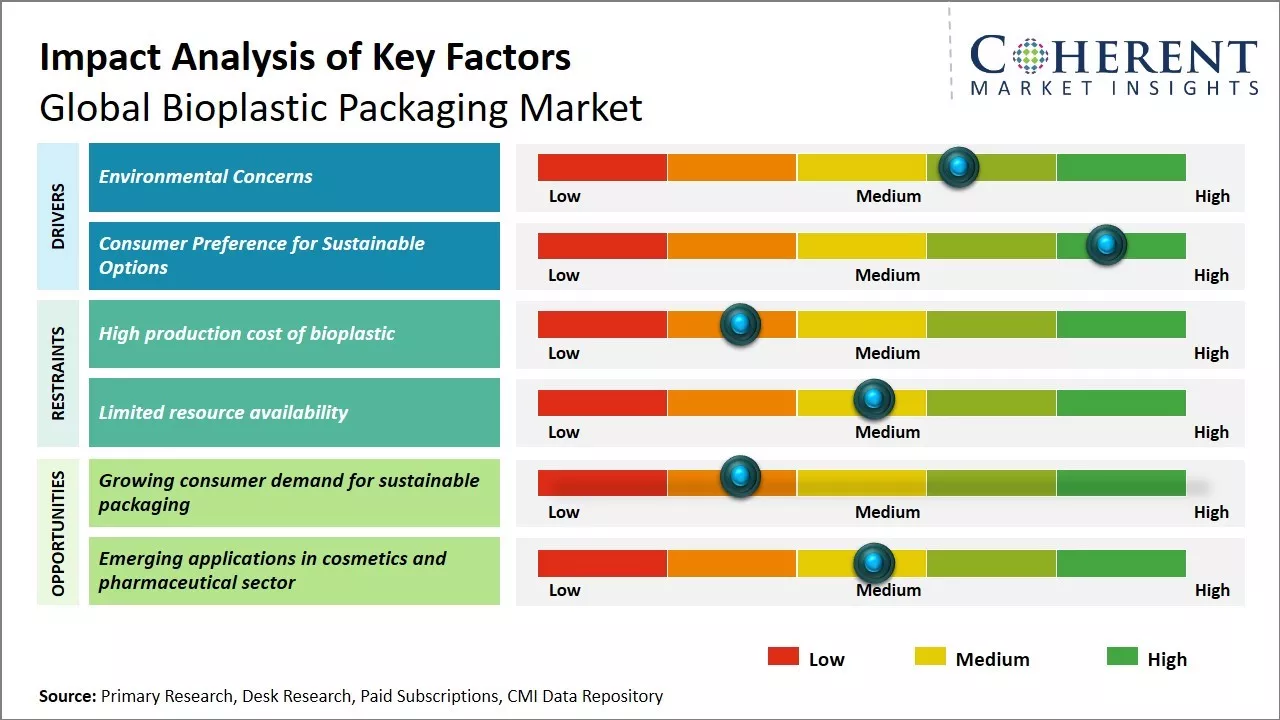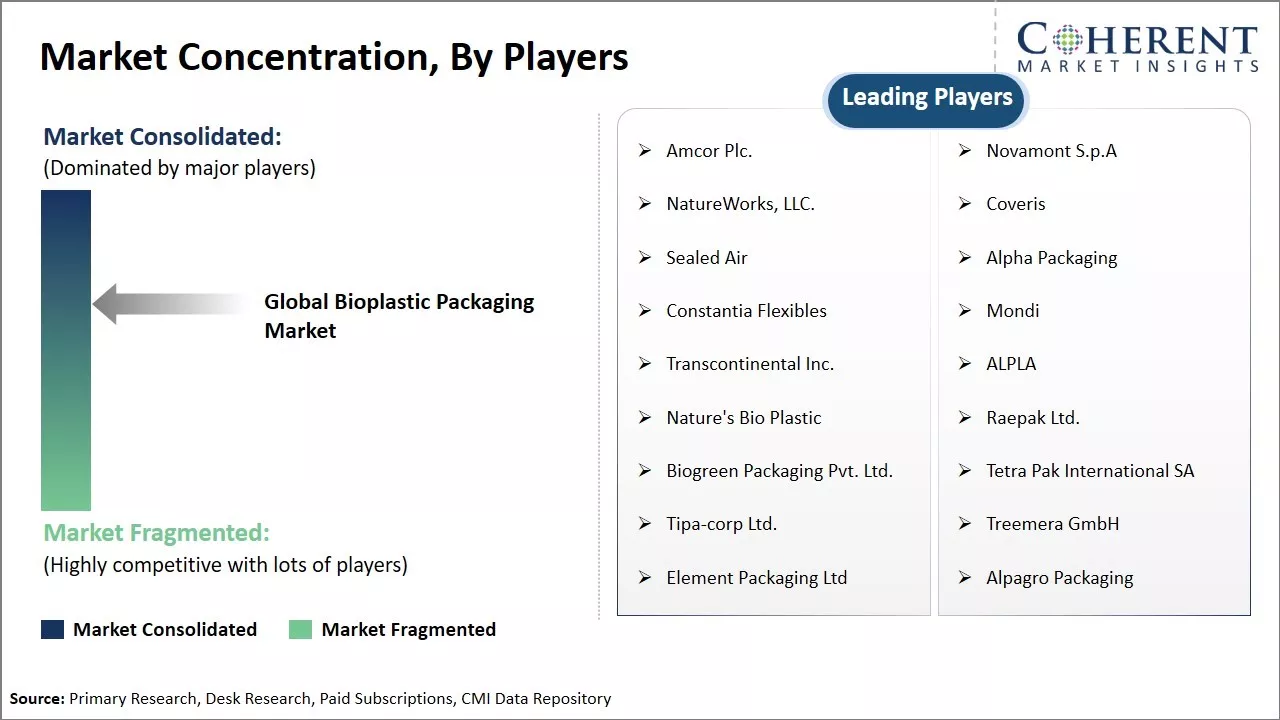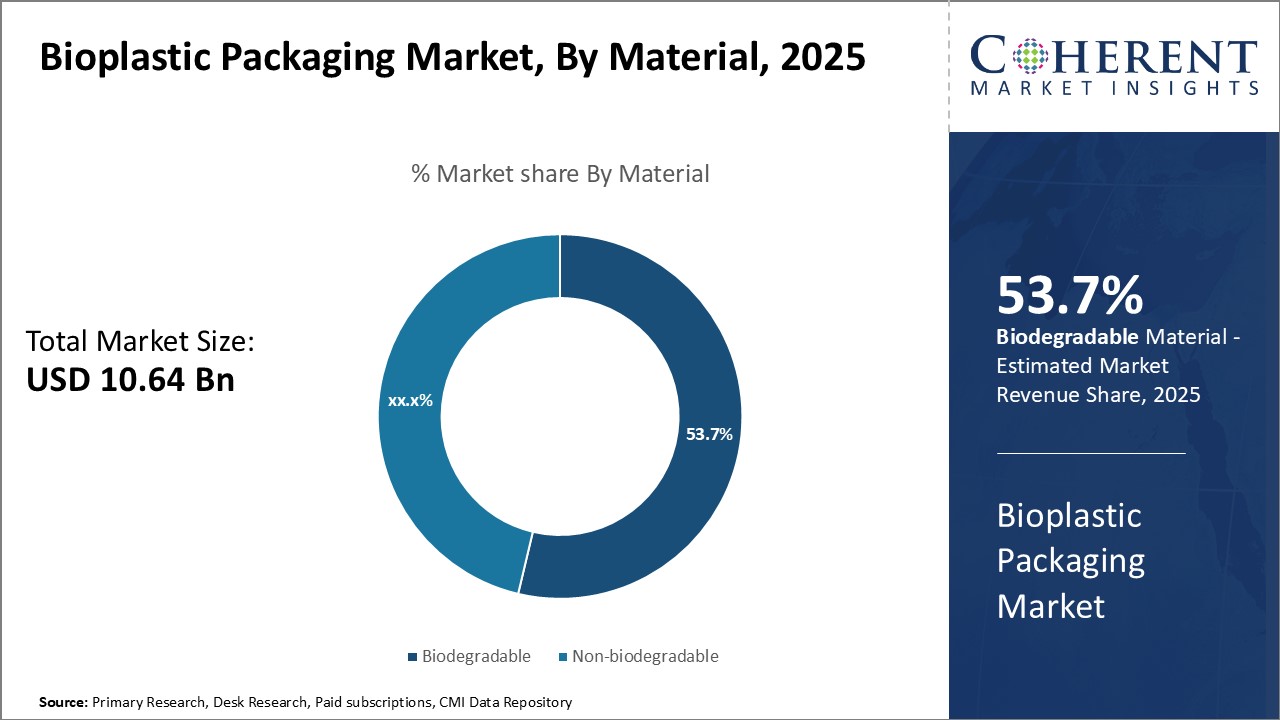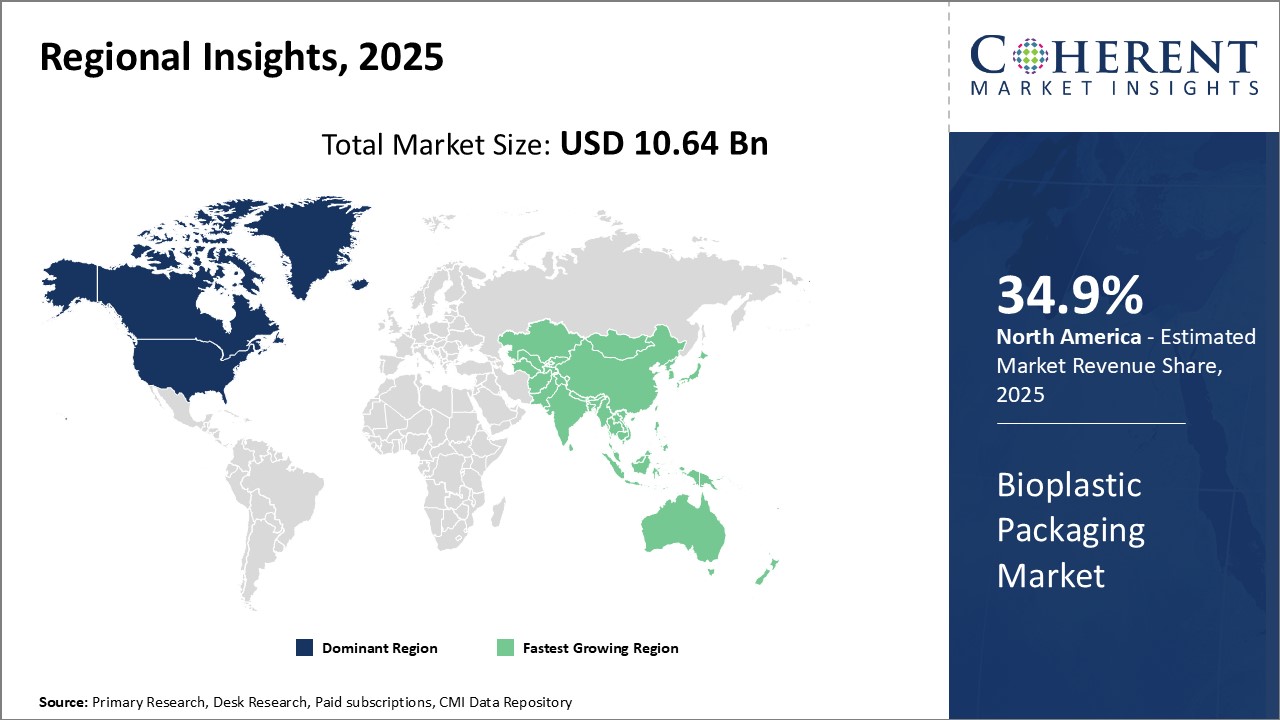
The global bioplastic packaging market is estimated to be valued at USD 10.64 Bn in 2025 and is expected to reach USD 24.29 Bn by 2032, growing at a compound annual growth rate (CAGR) of 12.5% from 2025 to 2032.

Discover market dynamics shaping the industry: Download Free Sample
The market is driven by the increasing awareness about sustainable packaging and favorable government regulations regarding the use of bioplastics. Major factors such as growing demand for eco-friendly packaging among consumers and regulations banning single-use plastic are boosting the growth of the bioplastic packaging market. Moreover, bioplastic packaging helps companies strengthen their sustainability profiles and gives them a competitive edge. However, high production cost of bioplastics as compared to conventional plastics and non-uniform global legislative scenario is restraining the market growth.
Environmental Concerns
With the growing awareness about the detrimental impact of plastic waste on the environment, there is a rising consumer preference for eco-friendly and sustainable packaging solutions. The non-biodegradable nature of conventional plastics means they persist in landfills and the environment for very long durations causing grave issues like pollution of water bodies and harm to wildlife. Bioplastics on the other hand are either biodegradable or comprise a certain percentage of biobased content making them a more environment-friendly alternative. Their production also involves usage of renewable biomass resources like corn, sugarcane or vegetable oils instead of fossil fuels bringing down the carbon footprint. More brands and retailers are switching to bioplastic packaging to appeal to consumers who are increasingly looking to make green choices. Regulations in some countries also mandate the use of bioplastics made from renewable sources for specific types of plastic products and packaging. This eco-awareness among shoppers as well as stricter norms have boosted demand for bioplastic packaging globally.

Get actionable strategies to beat competition: Download Free Sample
Consumer Preference for Sustainable OptionsThe increasing consumer awareness and preference for sustainable and eco-friendly products is a major factor influencing the growth of the global bioplastic packaging market. More consumers today are consciously opting for packaging materials that have lesser impact on the environment and are made from renewable plant-based resources. This trend is being driven by the younger environmentally-conscious generation that is willing to pay more for sustainable alternatives. There is a growing sentiment among individuals that single-use plastics have severe environmental consequences and create waste that ends up in landfills and oceans. This has led packaging manufacturers to offer bioplastic options made from biomass sources like sugarcane, corn starch, cellulose and vegetable fats/oils. Examples include packages for food items, bottles for beverages, containers, clamshells and others. According to data from the United Nations Environment Programme, global plastic production increased from 1.5 million tons in 1950 to roughly 380 million tons in 2015. However, less than 10% is recycled while the rest ends up in the natural environment. This alarming statistics has raised more concerns about plastic pollution. The stringent regulations being imposed by various governments worldwide to curb single-use plastics is another important factor responsible for the growth of the bioplastic packaging industry. Countries like European Union, Canada, China and India have either implemented bans or applied heavy taxes on virgin plastic bags and other non-biodegradable packaging items. For instance, the Government of India has prohibited the manufacturing, import, stocking, distribution, sale and use of all single-use plastic items that have low utility and high littering potential. Such policy changes are expected to boost the demand for bioplastics and drive the packaging industry towards more sustainable solutions in the next five years. With supportive regulations and a strong customer push for eco-friendliness, bioplastic packaging volumes are slated to increase significantly. This will play a major role in steering the growth trajectory of the overall market upwards.

To learn more about this report, Download Free Sample
Challenges: High production cost of bioplasticThe high production cost of bioplastic remains one of the major challenges restricting its mass adoption in the packaging industry. Despite positive environmental attributes, bioplastics are still more expensive to produce compared to conventional plastics. The existing petrochemical infrastructure also makes fossil fuel-based plastics cheaper. High costs limit bioplastics to niche applications and impact their price competitiveness in the marketplace.
Opportunities: Growing consumer demand for sustainable packaging
Growing consumer demand for sustainable packaging represents a big opportunity. Increased environmental awareness and preferences for eco-friendly solutions are driving consumers towards bioplastic packaging where available. Strict regulations aiming to curb single-use plastics also promote bioplastics adoption. As production scales up, costs are projected to decline making bioplastics more affordable and accessible to a wider range of end users.

Discover high revenue pocket segments and roadmap to it: Download Free Sample
Insights, by material: Environmental Consciousness Boosts Biodegradable Material DemandIn terms of material, biodegradable contributes 53.7% share of the global bioplastic packaging market owing to the rising environmental consciousness among consumers and regulatory push for sustainable alternatives. Biodegradable plastic decomposes completely after disposal without leaving behind toxic residues. This reduces the pollution caused by conventional plastic that clogs landfills for centuries. Major factors fueling the biodegradable material segment include. Growing preference for eco-friendly products: With climate change threats looming large, consumers are increasingly opting for sustainable goods that have lower carbon footprint. The negative publicity around plastic waste dumping in oceans is galvanizing the shift towards plant-based biodegradable packaging solutions. Favorable regulations: Many countries have formulated policies promoting alternatives to single-use plastics and banning specific plastic items. This regulatory support for bioplastics is creating a conducive environment for the biodegradable material segment to flourish. Certifications like composability help build credibility in the market.
Insights, By Type: Flexibility Powers the Flexible Packaging Boom
In terms of type, the flexible packaging segment holds 59.7% share as flexible plastics can be easily molded into various shapes for various products. Flexible bioplastics offer distinct advantages over rigid plastics Flexible wraps, pouches, and bags securely hold and transport products without breaks or spillage. Their barrier properties preserve freshness longer by blocking air and moisture. As they use lesser material, flexible packs have lower material input. Their downgauging potential means significant plastic savings per unit. Flexible films can be easily printed, sealed, or heat-wound onto irregular products like snacks items. Such form-fit enhances user convenience and shelf-appeal. Being entirely recyclable, flexible bioplastics allow “close the loop” within industrial or home compost systems. This recyclability accentuates their eco-friendly image.
Insights, By Applications: Food Packaging Drives Bioplastics Demand
Within applications, the food and beverage segment dominates bioplastic packaging usage due to stringent packaging quality demands. Bioplastics fulfill critical requirements for food-grade safety and hygiene. Bioplastic films and trays effectively prevent excess moisture loss or gain for perishables and processed snacks with 41.8% share. This maintains freshness and extends shelf-life. Select bioplastics can block gases like oxygen and carbon dioxide, preventing rancidity in items like meat and cheese slices or premature ripening in fruits. Microwavable bioplastic containers tolerate boiling liquid without cracking or damage, keeping prepared noodle cups or soup safe. Many bioplastics withstand high-frequency microwave heating without melting or distorting, offering safe re-heating solutions. Food-grade bioplastics allow direct-print branding and nutrition labeling as per regulatory standards. Certified compostable foodservice items support retailers’ sustainability commitments as they decompose without contaminating compost.

Need a Different Region or Segment? Download Free Sample
North America continues to be the dominant region in the global e-commerce packaging market owing to several factors with 34.9% of the market share. The large and developed e-commerce sector in countries like the U.S. and Canada generate a strong demand for various packages across different product categories. Ease of purchasing goods online along with robust logistics infrastructure has ensured high adoption of e-commerce. This, in turn, is a major driver of packaging needs in the region. Additionally, the presence of major packaging manufacturers and suppliers in North America allow e-tailers to access a wide range of packaging solutions at competitive prices. Customizable packages tailored for fragile, heavy and oddly-sized goods are commonly available. The regional market is also characterized by continuous packaging innovations for features like tamper-proof seals, easy returns and recyclability. Sustainability remains an important focus for packaging in the region.
Among growing markets, Asia Pacific has emerged as the fastest expanding regional market for e-commerce packaging globally. Rapid growth of the online retail industry coupled with rising incomes in developing nations is the primary factor here. China, India, and other Southeast Asian countries have seen over 50.5% year-on-year increase in online shopping, outstripping mature markets. This upsurge directly impacts demand for an assortment of packaging formats. The Asia Pacific region also offers packaging producers lucrative market opportunities due to increased localization of manufacturing. Large customer base and presence of leading online marketplaces are additional advantages. Furthermore, the availability of affordable raw materials and workforce has encouraged global brand owners to set up facilities in the region. This along with the proliferation of local packaging solution providers has made Asia Pacific an attractive destination for future expansion in the fast-moving e-commerce packaging industry.
Bioplastic Packaging Market Report Coverage
| Report Coverage | Details | ||
|---|---|---|---|
| Base Year: | 2024 | Market Size in 2025: | USD 10.64 Bn |
| Historical Data for: | 2020 To 2024 | Forecast Period: | 2025 To 2032 |
| Forecast Period 2025 to 2032 CAGR: | 12.5% | 2032 Value Projection: | USD 24.29 Bn |
| Geographies covered: |
|
||
| Segments covered: |
|
||
| Companies covered: |
Amcor Plc., Novamont S.p.A, NatureWorks, LLC., Coveris, Sealed Air, Alpha Packaging, Constantia Flexibles , Mondi, Transcontinental Inc., ALPLA, Nature's Bio Plastic, Raepak Ltd., Biogreen Packaging Pvt. Ltd., Tetra Pak International SA, Tipa-corp Ltd., Treemera GmbH, Element Packaging Ltd, and Alpagro Packaging |
||
| Growth Drivers: |
|
||
| Restraints & Challenges: |
|
||
Uncover macros and micros vetted on 75+ parameters: Get instant access to report
*Definition: The global bioplastic packaging market refers to the market for biodegradable and environmentally friendly plastic packaging materials made from renewable sources like plants, animals, and microorganisms instead of petroleum and natural gas. This includes packaging materials made from green polymers like polylactic acid (PLA), polyhydroxyalkanoates (PHA), starch blends, and others.
Share
Share
About Author
Kalpesh Gharte is a senior consultant with approximately 5 years of experience in the consulting industry. Kalpesh holds an MBA in Operations and Marketing Management, providing him with a strong foundation in market strategy and analysis. He has contributed to various consulting and syndicated reports, delivering valuable insights that support informed business decisions
Missing comfort of reading report in your local language? Find your preferred language :
Transform your Strategy with Exclusive Trending Reports :
Frequently Asked Questions
Joining thousands of companies around the world committed to making the Excellent Business Solutions.
View All Our Clients